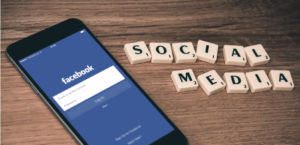
The ubiquity of cell phones and social media will likely never go away. But there’s a simmering backlash coming from some remarkable sources about the harm they might be doing to us. Consider:
- Hedge fund Jana Partners LLC and the California State Teacher’s Retirement System, which control $2 billion shares of Apple stock, sent an open letter to Apple last week pressing the company to offer parents more tools to control and limit iPhone use and for more research.
- The California Department of Public Health issued a warning in December against exposure to cell phone radiation, advising people not to keep cell phones in their pockets and not to put them against their ears for long periods.
- Facebook, citing research from the University of Michigan, acknowledged last year that passively consuming social media makes us feel bad.
- Former Facebook executive Chamath Palihapitiya told an audience at Stanford Graduate School of Business in December that he feels “tremendous guilt” about his role in creating social media that he believes is “ripping the fabric society apart.”
It’s early days, but the kickback against Apple, Facebook, cell phones and social media reminds me of how the culture cooled on the fast-food industry.
Fast food had become a mainstay of American life by the 1950s as consumers embraced its innovation, convenience and entertainment value. In the ensuing years, the fast-food business grew rapidly, expanding overseas and luring families with children’s menus and toys. It wasn’t until decades later that consumer groups, government agencies and health advocates fully informed the public about the health consequences of eating too many burgers and fries and of feeding them to their kids.
Consumer safety often plays catch up in a free-market economy. Nonetheless, we now know what we’re getting into when we walk into a fast-food restaurant. And as result, many of us choose not to do so.
But when it comes cell phones and social media, we’re still in the dark in terms of understanding just how deeply technology affects our mental, emotional and physical wellbeing. In many ways, our interaction with the digital world amounts to a huge biological experiment. Increasingly, that makes many of us uneasy.
If we’re completely honest with ourselves, we already know something isn’t right in our digital domain. For all the benefits our devices bring, they command way too much of our attention. We’re perpetually distracted and we miss real-time moments of our lives when wedded to them. We feel anxious and “less than” when binging on social media. Some of us are addicted to the dopamine boost of receiving a “Like,” a text or an e-mail.
Of course, we could all take more personal responsibility when it comes to how we use our devices and how we allow our children to use them. But we should also demand scientific data from tech companies and government agencies about how cells phones and social media affect us. The California Department of Public Health only issued its recent cell phone safety guidelines after a UC Berkley professor sued the agency to release its detailed findings.
As technology continues to expand its reach into our daily lives, there’s urgency to getting answers – particularly for our kids.
After citing research that 78 percent of teens check their phones at least hourly and half report feeling “addicted” to their phones, Jana and Calstrs executives wrote to Apple that “it would defy common sense to argue that this level of usage, by children whose brains are still developing, is not having at least some impact or that the maker of such a powerful product has no role to play in helping parents ensure it is being used optimally.”
On My Mind

What’s the difference between seeing and looking? Is there a difference?
These are questions I often ask elementary school children when teaching them visual mindfulness. Most of them eventually conclude that seeing involves more attention and focus while looking doesn’t. In meditation and in practicing mindfulness in our daily lives, we’re often instructed to settle the mind by attending to our breath, to sounds or to sensations in our bodies. Seeing gets short shrift.
And, yet, seeing is a lovely mindfulness practice. Thoughts arising in the mind are often accompanied by a cinema of images. We can notice the images and increase our awareness. When we’re out and about, we can stop and really see the sky, a leaf or another person and more fully inhabit our world.
Playwright Henry Miller said: “The moment one gives close attention to anything, even a blade of grass, it becomes a mysterious, awesome, indescribably magnificent world in itself.”
So, try this simple practice: Close your eyes. Take a breath. Then, open your eyes and gaze upon an object within your field of vision. (Use the image of the flower above if you like.) Take in its shape, its color and its size. Make a study of it. Notice details you might otherwise miss. If the object is small enough, reach for it, hold it in your hands and as Miller suggests marvel at its awesomeness.
Highly Entertaining
Watch this intriguing video and learn how the quiet life of Billy Barr, aka “The Snow Guardian,” has given scientists a treasure trove of climate change data. Barr devoted his life to measuring snow and to living simply. He makes me want to live more simply, too.